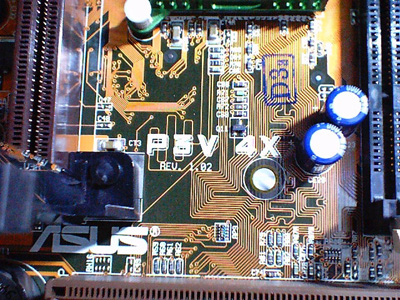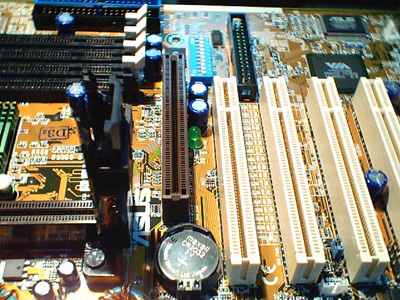|

Ahhhh, the trusty Asus P3V4X. Kinda makes
you feel all warm in the tummy don't it?
Anyway, what we have here is an Asus motherboard built on Via's Apollo Pro
133A chipset. It supports UDMA66 and AGP 4X out of the box which is kinda
neat ONCE YOU START NEEDING the bandwidth.
Possible FSB settings are 66 / 68 / 75 / 80 / 85 / 90 / 95 / 100 / 103 /
105 / 110 / 112 / 115 / 116 / 118 / 120 / 124 / 126 / 130 / 133 / 135 /
138 / 140 / 142 / 144 / 146 / 148 / 150 / 155 / 160 / 166 which should be
enough for most folks. You'll notice the nice selection in the lower range
of the scale which should make most Celeron owners happy campers. The
selections in the higher end are also great especially for those trying to
squeeze their PIII Coppermines for more but just can't jump big gaps.
I don't wanna give you the whole shebang on specs. so just click here
if you want the rest.

The board I got is revision 1.02 for comparison's sake.
LAYOUT
Asus did a pretty good job with the layout of this board. I only
managed to find a few anomalies with the design. First off is the location
of the bios' battery.

 The location of the bios' battery is kinda strange. You
can also see an LED between the AGP and the first PCI slot. It lets you
know that power is flowing.
The location of the bios' battery is kinda strange. You
can also see an LED between the AGP and the first PCI slot. It lets you
know that power is flowing.
It's not likely that you'll change batteries frequently, but it does add
an extra task when the time to change does come.
Next thing is the location of the floppy header.

It's right there between the first and second PCI slots.
This makes using longer cards a bit tricky without the cable getting in
the way. Not to mention AGP cards. It does get in the way especially if
your floppy drive is located in the top portion of your case.
|